The City of Lost Children
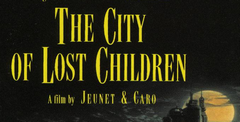
| a game by | Psygnosis |
| Genre: | Adventure/RPG |
| Platforms: | PC (1997), Playstation |
| Editor Rating: | 7.3/10, based on 3 reviews, 9 reviews are shown |
| User Rating: | 9.0/10 - 4 votes |
| Rate this game: | |
| See also: | Mystery Games, Quest Games, Best Detective Games |
As It Happens, I Saw This Trip as a golden opportunity to answer many burning questions that have been sitting annoyingly at the back of my mind for a while now. Namely, what on earth is City Of The Lost Children all about? We'd seen a few screen shots of it and it looked decidedly sumptuous, yet Psygnosis weren't exactly banging our doors down looking for coverage of the product. Also, the game was inspired by a Ccult' French movie of the same name. What the hell was that all about then? How come we didn't know anything about this film? ('Cos you're all a hunch of uncultured cretins - Ed.) Oh. Thanks. And then, of course, there was the issue that has had PC journalists and readers alike up in arms for the last two years: the French, are they really as weird as they seem to be? Are they really the nation of plot-losing,
onion-eating buffoons that we take them for, or are they actually really really nice people, as friendly and normal as you like and not in the slightest bit weird at all? All perfectly valid reasons for my taking a trip to France, I'm sure you'll agree. I had to get to the bottom of all these perplexing mysteries. The fact I would have to take a day off to do it and spend lunch in a beautiful French restaurant in Paris had absolutely nothing to do with it whatsoever, and anyone who says different is a dirty no-good lowdown liar with nothing better to with their time a to accuse hardworking journalists like myself of free-loading when all I'm trying to do is travel the world, all expenses paid (including lots of free beer, obviously), in the interests of investigative journalism. (Chris is a free-loading son-of-a-bitch - Ed.) BASTARD. Anyway, during the course of my investigate trip, I got to the bottom of all these puzzles. Let's start by taking a look at the movie.
Une movie une peu cultee
CCity Of The Lost Children', the movie that inspired Psygnosis France to produce the adventure you're reading about on these pages, is a very big cult movie in France. Directed and produced by Jean-Pierre Jeunet and Marc Caro, the same team that brought us CDelicatessen' (a seriously weird but hugely entertaining film), CLost Children' is rapidly gaining a cult following in the UK too. The Psygnosis team first became interested in making I the game when they went to see the making of the movie and were taken aback by the incredibly detailed and '.eye-catching sets used. Marc Caro, the jArt Editor on the movie, agreed to help Psygnosis reproduce the sets on computer, and so the game was born. . I saw a very late beta of the game while I was in Paris, and it looks absolutely gorgeous. The team are understandably chuffed with their progress, and in particular, the authenticity of the film's universe which they believe they have replicated exactly on PC.
Carol Faure, the game's producer, is confident that they have justified the use of a film licence perfectly: We could, of course, have done a platform game, but how original is that? We thought an adventure game would be the perfect vehicle to showcase the universe as it's seen in the movie. If you've seen the film, you'll recognise a great many of the in-game characters immediately. However, although we've reproduced the universe very well indeed, City Of Lost Children stands up as a computer game in its own right, with the general plot and story-line being very different to that used in the movie. Speaking of story-lines...
Une tale tres interestementique
You may have guessed from the title of the game that it's all about children, in a city, who've managed to get lost. Actually, that's not quite true. They're not lost at all, they've been KIDNAPPED. Apparently, a fanatical sect of blind cyclopses are running around the place, swiping all the tots, and selling them to a loony-tune scientist called Krantz (don't ask me how they capture all the kids if they're blind. 1 don't know. They just do). This Krantz chap reckons himself to be a perfect individual in every way (I wonder if he's got blond hair and blue eyes, and a little moustache?) except for the fact that he can't dream. So, he steals the dreams of the children in order to halt his premature ageing process.
You play Miette, a ten-year-old girl living under the influence of the evil Octupus, a pair of Siamese twins who govern her and force her to steal on their behalf. Your ultimate objective is obviously to rescue the children from Krantz's clutches, while at the same time freeing yourself from the influence of the Siamese twins.
The gameplay is pretty much what you'd expect front a point-and-click adventure, except, of course, the graphics are absolutely gorgeous, and the rich and engrossing plot from the movie makes for a very interesting adventure indeed. The first thing that sprang to my mind when I saw the game was Chmmm, this looks a bit like Alone In The Dark, except with better graphics'. This is no bad thing so long as the programmers and artists expand on the A1TD experience, as opposed to just lifting the whole idea from the original. I asked the programmers what they thought Lost Children brought to an already overcrowded adventure genre...
Proqrammeurs avec les fingeres de nicotine
At this point I was locked in a room with two French Programmers. One of them, Jesus Martinez (yes, Jesus, it was really him, I met him, he had a beard and everything) was sitting quietly in a corner of the room. The other one, Eric Metens, could barely hide his enthusiasm for the project, and went out of his way to impress on me that they had indeed taken AITD and made it much better. Over to Eric: We've taken the AITD technique and improved on it by using real-time lightsourcing and reflection. Also, whereas most game developers use motioncapture for cut-scenes, we've used it for the whole game. But really the lightsourcing is quite spectacular, with lights going on and off and reflecting the shadows of the in-game characters.
And he's not joking either. The animation for Miette is really quite stunning, with every aspect of her character being motion-captured (right down to the pleats on her skirt!!). Eric continues: Another innovation is the use of a movie universe. AITD is quite atmospheric but Lost Children is even more so, with dark backgrounds and classical music setting the scene.
Of course, being a PC reader, you won't have to risk spending 40-odd quid on the game to find out whether it meets expectations or not, because I'm going to review it for you next month. This will obviously mean another, lengthier trip to Paris so I can... (Not on your nellie - Ed.) Oh pleeeaase.
Download The City of Lost Children

System requirements:
- PC compatible
- Operating systems: Windows 10/Windows 8/Windows 7/2000/Vista/WinXP
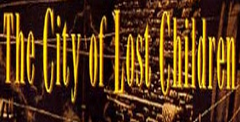
System requirements:
- PC compatible
- Operating systems: Windows 10/Windows 8/Windows 7/2000/Vista/WinXP
Game Reviews
The kids are alright
If you saw The City of Lost Children at the cinema you'll know already that it was an atmospheric film from the people (who made Delicatessen. You'll also know that it's... well, odd: a dark, strange tale of a Cfamily' of clones kidnapping kids in order to steal their dreams. The city itself is almost entirely free of children (so it's probably quite a nice place to live) because so many have been stolen and taken out to the oil rig where the clones hang out. The film deals with the attempts by Miette, a girl thief, and One, an educationally subnormal circus strongman, to save One's little brother from the unpleasant clutches of the dream-stealing clones and other scientific experiments gone wrong. They're led by rank, a clone who can't dream and who's ageing faster than a Hale and Pace sketch. And even though it has children in it, it's still alright - if only because the children aren't Disney-fied. It might help if you've seen the film, because you'll at least be familiar with all the characters, but if you haven't, it doesn't really matter. The game uses many of the film's elements and more or less works around the plot. But despite the fact that Marc Caro, the film's artistic director, had a lot of influence during the making of the game, knowing what happens in the film won't help you solve any of the puzzles.
Oh, what an atmosphere...
Like the film, the game looks very good indeed. The background artwork is outstanding, and captures the feel of the film very well. The attention to detail in the animation of the polygon-based figures is also excellent - it's the only game of its type that I can remember in which figures walking up or down stairs actually fit their feet to the steps - and key points in the game are punctuated by frequent prerendered cut-scenes.
As soon as you play it you'll think four words: CAlone', CIn', CThe' and CDark'. Make that seven words, and add COnly', CBetter' and CLooking'. Like AITD and its successors, it's a third-person viewed adventure, with frequent camera angle changes to frame the action. Unlike any of the AITD series, you can also change the camera angles yourself at times, by pressing the spacebar when the camera icon flashes at the top right of the screen. And also unlike AITD, it's more lush than a room full of alcoholics.
As you'd expect, the AITD approach means that gameplay consists largely of exploring areas, talking to other characters and trying to find objects to pick up to use somewhere else later on. In other words, there's a lot of hard thinking involved. There's still the usual problem of games of this sort: trying to do something, knowing it can be done, but not being in exactly the right place on screen for it to work. You'll tire of hearing Miette say I don't think I can manage it and I can't do anything.
On the other hand, without the combat and sudden unexpected deaths associated with the aforementioned games, it's more forgiving, and a lot less frustrating. About the only enforced game-loading that occurs is if you get chucked into the cellar as punishment more than three times, because the game then ends. But since this only happens if you hang about in the orphanage schoolroom too long, it's not worth worrying about. The other element that adds to the game's charm is that there often seem to be alternative solutions to the problems that face you. So if you're patient and like exploration and object collection, and if you've always liked Alone In The Darktype games, but been put off by the irksome combat and constant dying, this could be the ideal game for you.
Our heroes
Miette
You control Miette, the 12 year old orphan. In the film there are disturbing, not to say suggestive, undertones to her interest in, and relationship with, the strongman One. If you've only seen it in the (inexplicably) dubbed English version which came out on video, you won't know this, as her voice seemed to be performed by a reject from the Children's Film Foundation, and had all the inflexion of Stephen Hawking's voice synthesiser with CKiddiwink Mode' switched to the max.
One
The circus strongman with the heart of gold and the intellect of algae, One is played in the film by Ron Perlman, a very unusual looking man indeed. To say that his face is craggy is a bit like saying that the Himalayas are slightly slopey. Without wishing to be too unkind, it looks like the bones of his face are on the outside. He makes Tom Waites look like Keanu Reeves. Anyway, it's his little brother, Denree, who you'll be trying to save from the clutches of the evil Krank and his family. And before you ask, it's got nothing to do with Crackerjack.
Based on the film with the same name, City of Lost Children for the Sony PlayStation is an adventure title bound to give gamers a surreal experience. The graphics in this one are rendered and have shading and lighting effects to add realism. With incredible cinematics and gameplay to match, this one should give players quite a ride. A wide cast of strange characters allows for interesting play. The soundtrack is done by the same composer who did the music for Twin Peaks.
Some people may won der how to describe City of Lost Children to others (especially those who haven't seen the French film). Imagine Alone in the Dark in a huge rendered cityscape without the fighting.
The 3-D adventure title from Psygnosis puts gamers in control of Miette. a little French orphan who gets caught up in a strange story line-one that involves one-eyed men and kidnapped children.
The game features a load of different areas to explore. Like the movie, the dark, futuristic feel of the city lends itself to this type of gameplay.
The number of different buildings, rooms and alleyways to search is matched by the number of characters and creatures Miette can come in contact with or avoid.
Some characters include: The Watchman who will throw Miette into the warehouse and lock it if she's not careful. The Cyclopes, whose ears are extremely sensitive. have poor eyesight. The Siamese twin sisters who run the orphanage.
Players should beware of the cellar-to the orphans it's like a prison. The Siamese twins will threaten Miette with the cellar many times. Since Miette is crafty, threats of the cellar do not scare her-she'll always succeed in her schemes.
Players will have to travel through the main which is the city and its nooks and cran-nies-and then through other areas outside of the city. With its dark theme and intricate mazes, CoLC is no children's title.
CoLC features changing camera views much like Alone in the Dark. The main difference here is that gamers can manually change the camera angle by simply hitting a button when the option appears at the top of the screen.
All of the characters in the game, whether human or beast, have been rotoscoped with the motion-capture that has been so popular and so vital to realism these days.
All of the renders in the game are completely original-the graphics are incredible with realtime lighting for the characters and objects.
Gamer's EDGE
City of Lost Children is more than just a game. The movie. French-made, is about a city where children are being mysteriously kidnapped. Since the main character. Miette, is a kid. the whole kidnapping thing hits pretty close to home.
At first. Miette doesn't care much, but when she meets "One" and finds that his "little brother" has been kidnapped, slowly her attitude changes. From that point, the story line gets pretty weird.
The movie, like the game, features a huge cast of strange characters. The city in the movie, which is the same way in the game, is dark and dirty. The movie also features some great computer-generated effects (like the fleas and green smoke).
EGM suggests renting or buying the sub-titled version if the story sounds interesting. It beats the dubbed version by leaps and bounds. City of Lost Children is a great movie, even with its strangeness.
- MANUFACTURER - Psygnogis
- THEME - Adventure
- NUMBER OF PLAYERS - 1
Overview
The City of Lost Children is a graphical adventure based on the beautiful but disquieting French film by Jeunet and Caro. The story centers around Miette, a 10-year-old girl, orphaned and forced into a life of thievery to survive in a city whose children are being stolen away in the night en masse.
Miette meets up with a circus strong man named One, whose brother is missing. One suspects that the children are being taken out to sea, to a gigantic oil rig, but cannot begin to fathom why.
Here begins your quest. As Miette, you must devise a plan to find and rescue the lost children. As in most other adventure games, you will do this by finding useful objects, using them at the right times, and by interacting with various characters in the game.
Gameplay
The first thing that surprised me about City of Lost Children was that it wasn't a point-and-click adventure. Instead, you walked Miette around the city with selectable camera views of her as she walks, much like in Tomb Raider (not quite the same quality of graphics, though, but I'll get to that). Although the overall effect of Miette's motion was nice, there were a few glitches. Going up stairs, for instance. Whether walking or running to the stairs, Miette always gets bounced back momentarily before she continues up or down stairs -- almost like she's thinking "Oh, stairs, let's ponder this. Ok, let's go."
Along her way, Miette will find various objects, all of which have a purpose. I once had to start the game over because I had discarded one of three empty bottles I had found and could not find it again. Stupid me! I should have known that it wouldn't be there if I didn't need it. But most recent adventure games will throw in a red herring or two -- objects that you won't need. I felt that City of Lost Children could have used a little more of this element to provide more interest.
The puzzles are pretty easy, and that's coming from someone who usually runs out of patience and looks at a walkthrough. Most barriers require one specific object to get you through, and sometimes the object itself will tell you what it's for. For instance, I needed to break Miette into the cashier's hut to steal some baubles for her Siamese-twin guardian. When I found the key to the hut (it wasn't difficult), it actually said "Key to the Cashier's Hut." Lo! That makes life easy, but maybe too easy...
Also a little frustrating was Miette's limited repertoire of motions. She doesn't jump, thank you very much. She also doesn't like to bend down to pick things up except in one or two selected places where the game demands it (so the rest of the time, you get to hear "I don't think I'll bend down here" over and over). So basically, she walks, runs, and puts items in her inventory. I always find it irksome when a game like this gives you freedom of motion without letting you perform actions that would seem obvious -- jumping, crouching, climbing -- even swimming in that weird, toxic green sea would have been fun to try.
Graphics
As I mentioned before, City of Lost Children plays like Tomb Raider, where you maneuver your character around and switch camera angles to better see what's going on. But that's pretty much where the comparison ends. I will say that the backgrounds are beautifully drawn and often breathtaking, making me want to explore in every direction. Unfortunately, however, you are only allowed to move along certain pre-determined paths. The characters themselves contrast a little too much with the nice backgrounds. I thought they looked a little too "stuck onto it," as if they were Colorform magnets or cartoon drawings attached to the scenery with paste. I'm pretty sure that wasn't the intended effect.
Audio
Standard fare. The effects and ambient sounds added to the feel of the adventure without being intrusive. The music, while sparse, was suitable to the eerie nature of the game.
Documentation
The booklet gives a basic storyline, outlines some of the characters, and describes game controls. Probably sufficient, but not noteworthy.
System Requirements
Required: 486/66 Mhz computer, 8 MB RAM, local bus video card
Reviewed on: Pentium 120, 16 MB RAM, 4X CD-ROM drive, Diamond Stealth 64 video card
Bottom Line
City of Lost Children is visually enticing, and there are some nice moments of discovery, but few surprises. While the game successfully captures the weird spirit and graphic intensity of the film, I felt that the puzzles were a little too easy and that there should have been more freedom in the character interaction and general exploitation of the environment. If you don't play many adventure games, this might be a good way to break into the genre, but if you're a seasoned veteran of games like Rama or Myst, then you'd be better advised to pass on City of Lost Children.
This action/adventure game sends you on a search through 100 rooms. The animated 3D characters were rendered with models and motion-capture techniques.
Ground-breaking 3D graphics set the stage for The City of Lost Children, a graphic adventure game set in a bleak post-industrial landscape. You play an orphan who must find and release children who have been kidnapped by a mad scientist-Krank, a strange old man who kidnaps children and steals their dreams. In order to save the children, you must navigate through a dark city, filled with unique and sometimes bizarre characters.
The moody atmosphere and gritty environment serve as a perfect backdrop for The City of Lost Children, which includes over 100 views to explore with a 360 degree range of movement, and more than 20 real-time 3D characters animated from motion-capture video. The gameplay is jammed with intense puzzle-solving and intricate interaction with other characters. As you meet and talk with others the riddle of the Lost Children unravels. A stunning visual foray into a very strange world, The City of Lost Children will enthrall you.
Join Miette and a host of unusual characters in The City of Lost Children, a game based on last year's surreal film. City is a Resident Evil-style thinker that taxes your brain while sending you into a sleep-induced state.
As the young orphan Mi-ette, you take on various petty-theft assignments given to you by diabolical twin sisters, uniformly known as Pieu-vre. Ultimately, however, your goal is to free the children who have been kidnapped for the evil Krank.
Although the graphics feature movie-quality cinematics and beautifully rendered scenes, the gameplay is very slow and is based on extremely tough searching-and-gathering rather than any intense confrontations with enemies.
The sound is a kaleidoscope of soothing background music and crisp, clear voices with European accents that give the game the feel of a foreign movie.
Those who have seen the movie will probably like this adventure more than other gamers, but even they might find the challenging play too tough. If you're determined to play, take an evening to rent both the movie and the game to see which goes first, your eyesight or your sanity.
ProTips:
- Be sure to talk to every character you encounter for helpful tips.
- Pick up chicken and cake to bribe the tramp into filling up your empty liquor bottles.
- To deactivate the lighthouse, throw the iron bar you find on the dock at this fuse box.
Based on the surrealist cinematic tour de force by director Marco Carro. City of Lost Children looks just as eerie and moody as last year's film. Combining clean, crisp graphics with a Resident Evil-type engine, City may be the successor to the infamous zombie-chaser--albeit with a lot less blood. Playing as the orphan Miette, you meet an interesting cast of characters, including the circus strongman, One. and the evil Krank, who kidnap children and steal their dreams. These early pics make a strong argument for City of Lost Children shaping up into a phenomenal game.
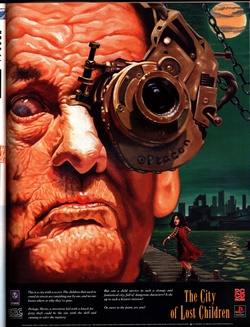
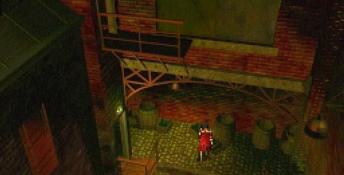
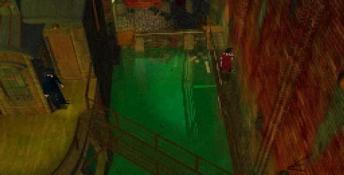


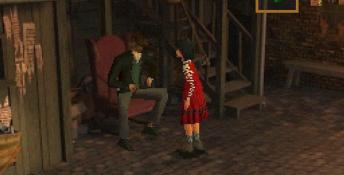
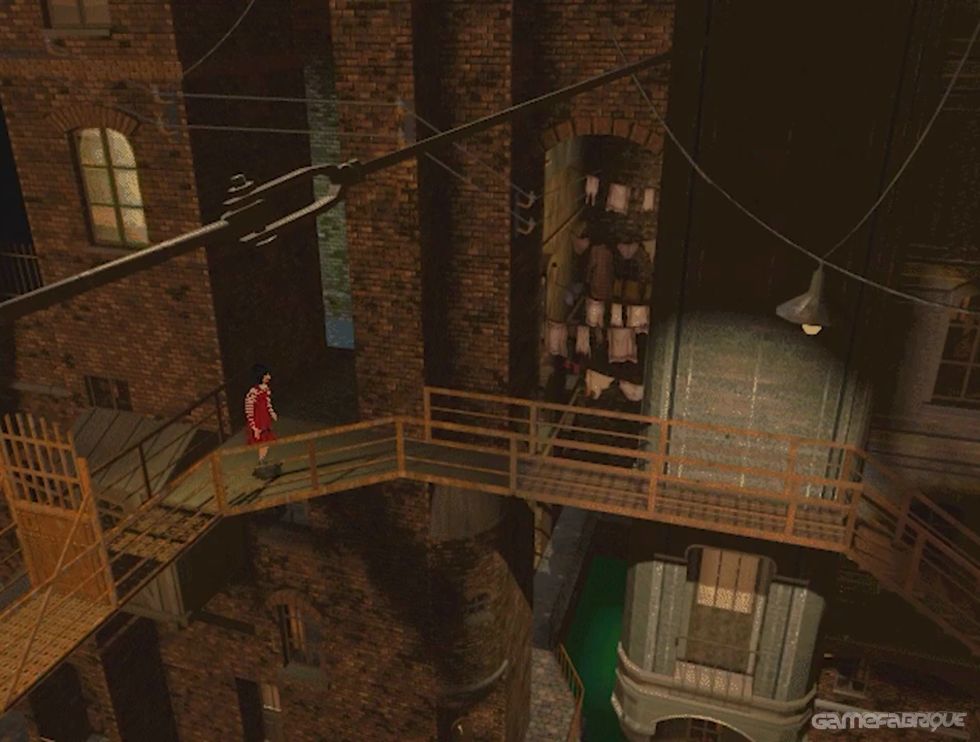




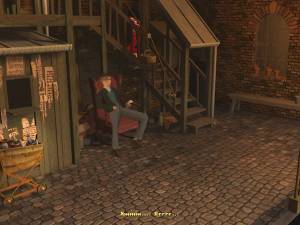

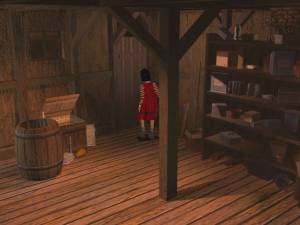


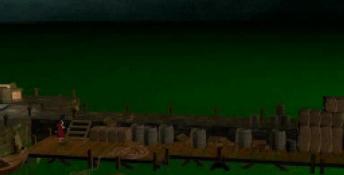
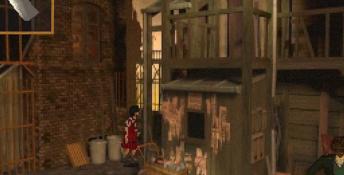
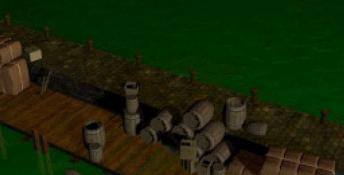
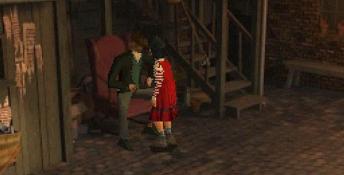
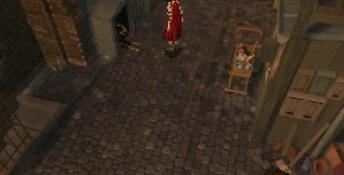


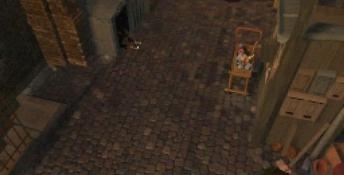
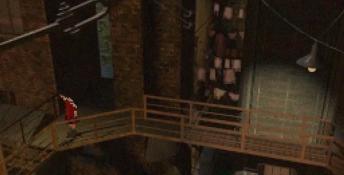


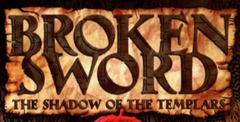 Circle of Blood/Broken Sword
Circle of Blood/Broken Sword
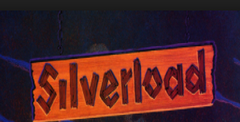 Silverload
Silverload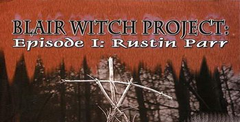 Blair Witch Volume I: Rustin Parr
Blair Witch Volume I: Rustin Parr
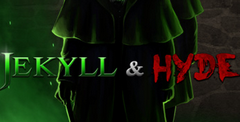 Jekyll & Hyde
Jekyll & Hyde
 Jack the Ripper
Jack the Ripper
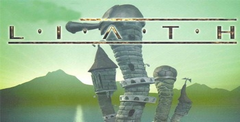 Liath: WorldSpiral
Liath: WorldSpiral
 Wild Wild West: The Steel Assassin
Wild Wild West: The Steel Assassin Action Man: Robot Atak
Action Man: Robot Atak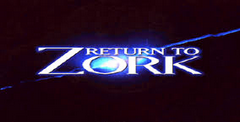 Return to Zork
Return to Zork Grid Runner
Grid Runner
 RAMA
RAMA